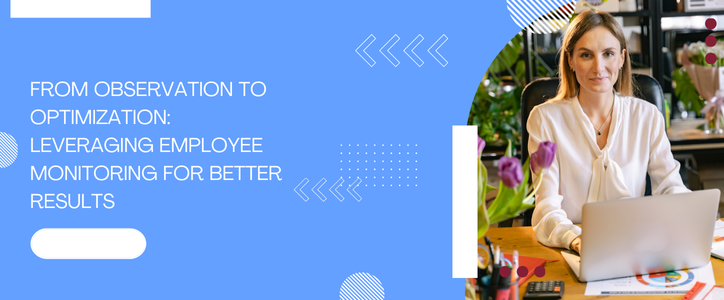
Do you know how many companies implement employee monitoring software and for what reasons? The statistics show that over 70% of employers monitor the work-related activities of the employees. The same rate mentions enhancement in productivity as the basic purpose for employee monitoring. This article will show the path of employee tracking from observation to optimization.
What Is Employee Monitoring?
Employee monitoring is a practice leveraged to track the work-related activities of the target member of the staff or the whole department. To facilitate this practice, the developers have launched software, Spyrix for instance, designed to track many activities like social media monitoring, web history usage or screen recordings. The depth of observation depends on the purposes of monitoring practice.
The main idea of tracking is to optimize the workforce effectiveness in the tasks’ completion and meeting deadlines. But there are many other reasons why employers decide to set up this system inside the business:
- Secure the company’s sensitive data
- Prevent internal data leakage
- Distribute resources reasonably
- Streamline the workflow due to the even distribution of tasks
- Manage remote teams
The list above depicts the main ideas why monitoring is so widespread among business leaders. Along with the data protection and enhancement in productivity, employers gain detailed reports with analytics and metrics showing the bottlenecks of the process. Besides, there is a clear understanding of what step to take next. The managers are ready to make more informed decisions.
The Link Between Observation and Productivity
There is a clear connection between observation and productivity, if we speak about employee monitoring. The top reason for implementation of this software is to reach maximum productivity and find the balance in the workflow.
Small businesses use these tools to enhance productivity, not to reinforce biases against specific employees. If business leaders build transparent relations, the personnel won’t feel out of order. In major cases, companies do not infringe the rights of workers for private life; they pick up insights solely into work-related activities.
What factors directly affect productivity? Active vs. idle time is the basic factor showing why employees do not meet the deadlines. One note to mention is the overloaded employees; when the tasks are distributed unequally, there is a high chance of non-completion of the set goals.
In this case, employee monitoring software reports will depict what tasks the personnel spend much time on. In turn, managers can streamline the workflow and subdivide the tasks evenly to reach higher performance. Redistributing tasks ensures a balanced approach to project execution.
Along with time terms, tracking tools enable reasonable resource allocation. Monitoring helps ensure employees use resources like social media, web pages, and printers for work-related purposes only.
Moving From Observation to Optimization
Employee monitoring software doesn’t stand still, having grown into an efficient system that drives productivity and operational efficiency. Modern monitoring software focuses on analyzing data and delivering actionable insights. By analyzing recorded metrics, managers can build a new strategy, revive the past ones, or enhance the existing, by incorporating additional training sessions.
Comprehensive monitoring software has embraced advanced technologies such as artificial intelligence (AI), machine learning (ML), and real-time analytics. These innovations enable businesses to not just observe but also understand and enhance employee performance.
To successfully move from observation to optimization, businesses must adopt the following strategies:
- Invest in advanced software: Choose tracking tools supplied with AI, ML, and analytics features. These capabilities are significant for transforming raw data into actionable insights.
- Focus on transparency: Notify employees about monitoring practices and spot how these instruments benefit both the company and the workforce. Transparency builds trust and reduces resistance.
- Analyze and Act Regularly review the insights provided by the software and implement changes to address inefficiencies or improve workflows. This iterative approach ensures continuous improvement.
- Customize Monitoring: Add extra monitoring settings to align with your business goals. For example, focus on productivity metrics for sales teams and error detection for quality assurance teams.
- Balance monitoring and privacy: Ensure that optimization efforts respect employee privacy. Adopt ethical monitoring practices to maintain a positive work environment.
Key Takeaways for Businesses
- Improved efficiency: Optimization ensures resources are used effectively.
- Higher employee satisfaction: Data-driven adjustments lead to fairer workloads and better work-life balance.
- Enhanced decision-making: Insights reduce guesswork and improve strategic planning.
- Sustainable growth: Continuous improvement creates a foundation for long-term success.